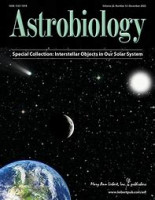“Benefiting from their adaptability to extreme environments, subsurface microorganisms have been discovered in sedimentary and igneous rock environments on Earth and have been advocated as candidates in the search for extraterrestrial life. In this article, we study iron-mineralized microstructures in calcite-filled veins within basaltic pillows of the late Ladinian Fernazza group (Middle Triassic, 239 Ma) in Italy. These microstructures represent diverse morphologies, including filaments, globules, nodules, and micro-digitate stromatolites, which are similar to extant iron-oxidizing bacterial communities. In situ analyses including Raman spectroscopy have been used to investigate the morphological, elemental, mineralogical, and bond-vibrational modes of the microstructures. According to the Raman spectral parameters, iron minerals preserve heterogeneous ultrastructures and crystallinities, coinciding with the morphologies and precursor microbial activities. The degree of crystallinity usually represents a microscale gradient decreasing toward previously existing microbial cells, revealing a decline of mineralization due to microbial activities. This study provides an analog of possible rock-dwelling subsurface life on Mars or icy moons and advocates Raman spectroscopy as an efficient tool for in situ analyses. We put forward the concept that ultrastructural characteristics of minerals described by Raman spectral parameters corresponding to microscale morphologies could be employed as carbon-lean biosignatures in future space missions.” published in Astrobiology

